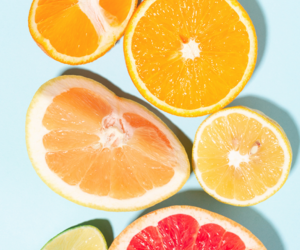The following editorial was published on September 14, 2014, by The Ledger.
Do you love orange juice? If so, do you ever think about the process it goes through to get to your table each morning — growing, picking, selling, serving? We might not care about that, just as we don’t question how the chicken or broccoli or potatoes end up on the dinner table each night. But we should, and here’s why:
Polk County produces the most boxes of citrus each year — 24.6 million boxes in the 2012-13 season, the most recent figure available. New numbers will be released Thursday.
It’s also No. 1 in citrus acreage.
76,000 people make a living off citrus in Florida. Being No. 1 in two big categories, Polk County employs many of those workers.
Citrus is grown on 525,000 acres in 29 counties down the heart of Florida. Three other counties — Citrus, Palm Beach and Pinellas — also contribute small amounts.
The commercial citrus industry has an estimated $9 billion annual economic impact to the state.
But the livelihood of all those people is in jeopardy for many reasons, the most important one being citrus greening. Two others are related: psyllids, which carry the greening bacteria and therefore spread the disease, and post-bloom fruit drop, which occurs on infected trees.
THE FIGHT OF ALL FIGHTS
Hope exists, Mike Sparks, CEO of Citrus Mutual, told The Ledger’s Editorial Board in a recent meeting. “There are things to be encouraged about, but we are in the fight of all fights.”
Since greening was discovered in fall 2005 and appeared in Polk County two years later, the Lake Alfred-based Citrus Research and Development Foundation— founded in 2009 to research the disease — has spent more than $92 million to research it. In addition, Congress passed a farm bill earlier this year that allotted $125 million for research for five years. Officials are working to get that money to scientists now to introduce large-scale studies on potential game-changers:
Antimicrobial chemicals that have been shown to kill the greening bacteria in lab tests but not yet on trees in groves.
A heating method that also kills the bacteria in the lab.
Foundation scientists have two main goals: keeping existing trees productive and identifying the best variety of trees to plant — ones that are the most resistant.
Coca-Cola, maker of Minute Maid orange juice, has contributed $3 million to research since 2011. In addition to needing fruit for OJ, Coca-Cola and Pepsi, maker of Tropicana in Bradenton, need citrus byproducts like essences and oils for other products.
“It’s not time to move us to the obituary section just yet,” said Larry Black, general manager of Peace River Packing and president of the board of Citrus Mutual, the governing body of the state’s largest growers’ association.
Some multigenerational growers have invested more money in the past two years and are trying new things, like planting 270 citrus trees per acre rather than the 140 or so they used to plant. “We see an opportunity to survive and thrive in this environment,” Black said.
CHANGE IS CONSTANT
Growers must innovate to stay alive, and that’s leading to getting a return on their new-tree plantings in 11 years. Trees that now last 15 years are considered productive, compared with trees that used to last more than one generation.
Like many industries, the growers who haven’t changed are “really struggling,” Black said. “Change is constant. Those of us who are committed will be survivors.”
Grower Mark Wheeler said he and others are awaiting the Oct. 10 U.S. Department of Agriculture estimate, even though a higher number than the independent estimates already released — 89 million to 96.6 million — doesn’t mean all fruit will get to juice plants because of the pre-harvest drop problem, he said.
As part of change, 93 percent of growers now belong to a Citrus Health Management Area. Growers who have joined a CHMA work together to coordinate spraying and other measures to try to prevent greening and other pests from spreading. Those who don’t participate hear about it, Sparks said. “It’s forcing small and mid-sized growers to work together.”
None of these men is giving up on anything from planting to citrus production to the orange juice on your table. They know demand has kept
prices relatively high for them, but that’s created some problems for consumers. They’d like to increase the supply so the price will come down and our kids will grow up on the nutrient-dense morning drink we enjoyed as youngsters — and some of us still do. “We’re selling every single quality orange we have,” Sparks said.
Whether you’re a native or a newcomer, you’ve probably driven by commercial groves both large and small.
They do more than provide the OJ you drink; they provide jobs. “Citrus is the part of the fabric of our county,” Wheeler said.
And he’s right. Don’t disregard growers or their plight; they’re doing the best they can to keep an industry alive, and we should thank them for that.
